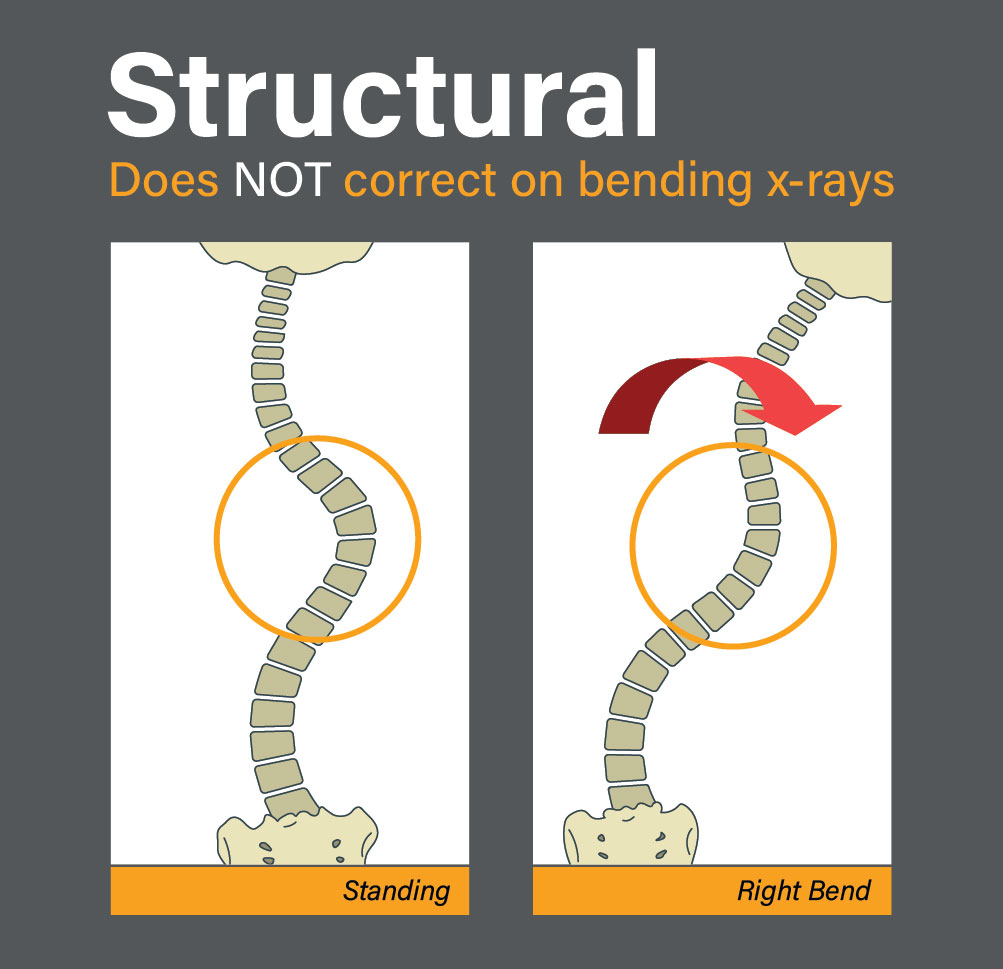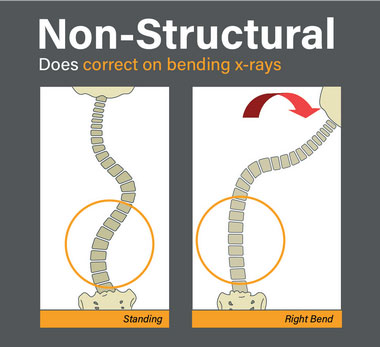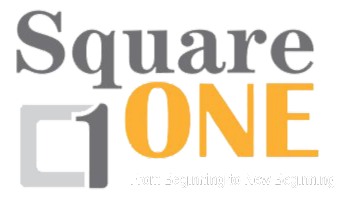The Differences Between Non-Structural And Structural Scoliosis
Scoliosis is a condition that causes an irregular curvature in the spine to one side. There are varying degrees of severity when it comes to scoliosis. In some cases, the spine may only curve to the side by a slight angle of 10 degrees (the threshold for a scoliosis diagnosis).
In other cases, it may cause a pronounced curvature of over 50 degrees, significantly affecting a patient’s movement quality of life.
Although treatment relies heavily on a wide range of factors that include the severity of the curvature, it also depends on the type of scoliosis. There are two types of scoliosis: structural and non-structural. Understanding the differences between the two is crucial to ensuring successful treatment.
What Is Structural Scoliosis?
Structural scoliosis, also known as “true” scoliosis, is the most common form of scoliosis. It’s a three-dimensional condition that occurs when the spine is abnormally curved both laterally and rotationally. This means that it not only bends to one side, but also twists and contorts in such a way that the vertebrae become misaligned.

an illustration of structural scoliosis
This type of scoliosis is caused by changes in the structure of the spine, including the vertebrae or discs. As a result, the spinal curvature remains even if the person changes positions. There are several kinds of structural scoliosis, including the following:
Idiopathic Scoliosis
Idiopathic scoliosis is the most common kind of structural scoliosis. Around 80% of scoliosis cases are idiopathic. Scoliosis is classified as “idiopathic” when the cause is unknown. Idiopathic scoliosis occurs mainly in infants, juveniles, and adolescents.
If an adult is diagnosed with idiopathic scoliosis, it’s because they had mild scoliosis as a child, and the condition continued into adulthood before it was diagnosed.
Degenerative Scoliosis
Degenerative scoliosis is a form of structural scoliosis that typically affects adults over the age of 40. It is caused by the gradual degeneration of the discs and vertebrae due to disease or aging. This type of scoliosis usually develops slowly but can also worsen quickly, depending on the underlying cause.
Degenerative scoliosis may be a scoliosis that was present as an adolescent and then progresses as an adult or it may be a new scoliosis that develops as an adult and is caused by De Novo scoliosis.
In addition, degenerative scoliosis can lead to other issues, such as chronic pain and stiffness. One study estimated that 60% of adults over the age of 60 have at least a mild case of degenerative scoliosis.
Neuromuscular Scoliosis
Neuromuscular scoliosis is a form of structural scoliosis caused by muscle or nerve conditions. The condition is caused by a lack of muscular control. It is most commonly associated with conditions such as cerebral palsy, muscular dystrophy, neurofibromatosis, spinal cord injury, syringomyelia or srinx (fluid filled cyst within the spinal cord), and spina bifida.
Neuromuscular scoliosis progresses rapidly and often requires surgery to correct the curvature. The incidence of scoliosis in patients with muscle and nerve conditions can be quite high. For example, 80% of patients with cerebral palsy have neuromuscular scoliosis.
Congenital Scoliosis
Congenital scoliosis is a form of structural scoliosis that occurs when a deformity in the spine is present at birth. It’s caused by an abnormality in the development of the spine before birth.
For example, if one of the vertebrae in the spinal column doesn’t form completely during fetal development, it can lead to congenital scoliosis. In addition, infants born with congenital scoliosis often have health issues related to the spine, such as bladder, kidney, or nervous system problems.
Fortunately, congenital scoliosis is extremely rare, only affecting 1 out of every 10,000 newborns.
What Is Non-Structural Scoliosis?
Whereas structural scoliosis is a three-dimensional condition, non-structural scoliosis (also known as functional scoliosis) is a two-dimensional condition. This means that the spine only curves to one side but does not twist or contort in such a way that the vertebrae become misaligned. This is also called pseudo scoliosis and is not a true scoliosis.

an illustration of non-structural scoliosis
As such, non-structural scoliosis is not considered as a “true” scoliosis. Instead, non-structural scoliosis is usually caused by one of the following:
- Muscle Spasms: Some people experience muscle spasms, which can cause the spine to curve temporarily to one side. This happens due to the muscles contracting and pulling on one side of the spine.
- Difference In Leg Height Or Length: A difference in leg height or length can cause an uneven amount of weight to be placed on one side of the body, which can cause the spine to curve to compensate for the imbalance. A difference in leg length may lead to a true scoliosis forming.
- Inflammation: Inflammation in the pelvis or spine can cause one side of the body to be pulled down, making the spine curve to one side. Inflammation can be caused by a herniated disc or other types of injuries. I think this may be better put as pain or antalgic posture)
Comparing The Prevalence Of Structural Versus Non-Structural Scoliosis
An estimated 2-3% of the population has some form of structural scoliosis. A majority of structural scoliosis cases are idiopathic, meaning that the underlying cause is unknown. It’s believed that genetics may play a role in this type of scoliosis, however there is no clear-cut evidence that a specific gene or group of genes causes scoliosis. A study shows there is more occurrence of scoliosis among adults than adolescents.
Studies show that almost 30% of patients with adolescent idiopathic scoliosis (AIS) have a history of the condition in their family.
The prevalence of non-structural scoliosis is unknown. This is because non-structural scoliosis does not cause any long-term problems and is often caused by temporary conditions such as muscle spasms or inflammation. Because it’s caused by external factors and not an issue with the actual spine, non-structural scoliosis is not considered a genetic condition.
Additionally, unlike structural scoliosis which can only be corrected to varying degrees, non-structural scoliosis can completely resolve with time and the right treatment. Therefore, the prevalence of non-structural scoliosis is difficult to determine.
How Each Type Of Scoliosis Affects Physical Development
Scoliosis can affect a child’s physical development as they grow. After all, their bones and spines are still developing – it’s only as an adult that the bones and joints in the body fully mature. Children with scoliosis will be affected differently depending on the type of scoliosis they are diagnosed with.
The following are some key differences between how structural and non-structural scoliosis affects physical development:
- Structural Scoliosis: Structural scoliosis can cause permanent damage to the bones and spine, affecting physical development over time.
As the condition progresses, spinal bones can become increasingly misaligned, leading to irreversible deformities. This can put extra pressure on the spine and cause pain or discomfort. In addition, it can cause changes in posture as the spine twists and curves in an irregular way.
- Non-Structural Scoliosis: Unlike structural scoliosis, non-structural scoliosis only makes the spine look like it is curving. Because non-structural scoliosis is caused by external factors, it doesn’t necessarily cause permanent damage to the bones and spine.
Once the underlying condition is addressed, the spine can return to its normal shape and posture. Thus, non-structural scoliosis does not usually affect physical development.
The Impact Of Structural And Non-Structural Scoliosis On Daily Life
Depending on the severity of your spinal curvature, scoliosis can affect your ability to complete activities of daily living (ADL). Scoliosis can result in various symptoms that make physical activities challenging, such as pain or stiffness. With that in mind, the following are some of the ways that structural and non-structural scoliosis can affect daily life:
- Structural Scoliosis: Structural scoliosis can significantly impact someone’s daily life. For mild cases of structural scoliosis, patients may not experience any noticeable effects in their everyday activities.
However, for more severe scoliosis cases, it can lead to pain and discomfort, making daily tasks difficult or even impossible. Structural scoliosis can also reduce range of motion and limit mobility as the condition progresses.
- Non-Structural Scoliosis: Non-structural scoliosis does not typically impact daily life. Since it is usually caused by temporary conditions, such as muscle spasms or inflammation, it can be treated relatively quickly.
In fact, if you have non-structural scoliosis, the irregular curvature of your spine might temporarily resolve when you lie down or bend forward. As a result, most people with non-structural scoliosis can complete daily tasks without discomfort or pain.
How Is Each Type Of Scoliosis Diagnosed?
In general, if your spine curves to the side, there’s a good chance you have scoliosis. A scoliosis specialist can do a physical examination to determine if there is an issue with the spine’s curvature. They will also conduct further testing before making an official diagnosis.
The following are the different ways that a specialist will diagnose structural and non-structural scoliosis:
- Structural Scoliosis: To diagnose structural scoliosis, the specialist will look for physical signs of scoliosis, including a sideways curvature of the spine and uneven shoulder blades or hips. If there is an irregular curvature, the specialist will conduct a physical examination and request X-rays to confirm that the spine is misaligned.
They may also order a magnetic resonance imaging (MRI) or a computed tomography (CT) scan to rule out any potential underlying conditions.
- Non-Structural Scoliosis: To diagnose non-structural scoliosis, the specialist will first conduct a physical examination to identify an irregular curvature in the spine. They may assess this in various positions, such as lying down or standing up. If the curve disappears or reappears in these positions, then it’s likely the diagnosis is non-structural scoliosis.
The specialist may still order X-rays to rule out structural scoliosis and request additional tests to look for any underlying conditions causing the curvature.
Is Each Type Of Scoliosis Measured In The Same Way?
There are two main ways to measure scoliosis: the Cobb angle and the Risser scale. The Cobb angle is the most commonly used way to measure scoliosis, and it is used to measure both structural and non-structural scoliosis types. Not only is it used to measure the angle of the curvature to diagnose scoliosis, but it’s also used to diagnose the severity of the condition.
For example, the abnormal spinal curvature must be at least 10 degrees with rotation to be diagnosed as scoliosis. Additionally, the greater the angle, the more severe the diagnosis.
On the other hand, the Risser scale is mainly used for structural scoliosis. It was developed to grade the skeletal maturity of the patient, which is used to predict the potential future growth of the spine. The Risser scale consists of six stages (0-5). It is used in conjunction with the Cobb angle to determine the level and type of treatment needed.
Treatment Options For Each Type Of Scoliosis
Because structural and non-structural scoliosis have different causes and affect ADLs differently, the way they are treated will also vary. In fact, treatment will vary on a case-by-case basis depending on various factors. These factors include whether or not the scoliosis is structural, the severity of the Cobb angle, the Risser scale, the symptoms, and the patient’s age.
Here at Square One Health, we provide a wide range of science-based treatment options for both structural and non-structural scoliosis:
- Structural Scoliosis: Treatment will vary based on the severity of the condition. However, the goal is to stop progression, relieve symptoms, and correct the curvature as much as possible. At Square One Health, we use several approaches including Scolibalance which combines Schroth Methods, Scientific Exercise Approach to Scoliosis (SEAS), and Chiropractic Biophysics (CBP).
These approaches use a combination of scoliosis-based exercises and stretches, science-based chiropractic techniques, and bracing. For severe cases, surgery may be recommended.
- Non-Structural Scoliosis: Treatment for non-structural scoliosis depends on the underlying causes. If it is caused by an injury or inflammation, then physical therapy and chiropractic may be recommended. Specific scoliosis-based exercises and postural awareness can also help to improve posture, reduce muscle spasms, and alleviate pain.
What Is The Prognosis For Both Types Of Scoliosis?
Essentially, structural and non-structural scoliosis are two different conditions that both result in abnormal curvature of the spine. However, the causes, symptoms, and treatments are vastly different. As such, the prognosis is different as well:
- Is Structural Scoliosis Permanent?
Yes. Structural scoliosis is a lifelong condition, and the goal of treatment is to stop progression, relieve symptoms, and correct the curvature as much as possible. Unfortunately, it is impossible to “cure” structural scoliosis.
- Is Non-Structural Scoliosis Correctable?
Yes. Unlike structural scoliosis, non-structural scoliosis is often completely reversible when the underlying cause is identified and addressed. For example, if it is caused by an injury or inflammation, then physical therapy and anti-inflammatory medications may be enough to reverse the curvature.
Identifying The Type Of Scoliosis Is A Crucial First Step
If you suspect that you have scoliosis, then it’s vital that you get an official diagnosis to determine whether you have structural or non-structural scoliosis. That is why we recommend consulting with our experts at Square ONE Health.
No matter what type of scoliosis you may have, we can accurately diagnose your condition and provide you with a comprehensive treatment plan that is tailored to your specific health needs.
Are you ready to get help for your scoliosis? Check out how we treat scoliosis at Square ONE Health.
